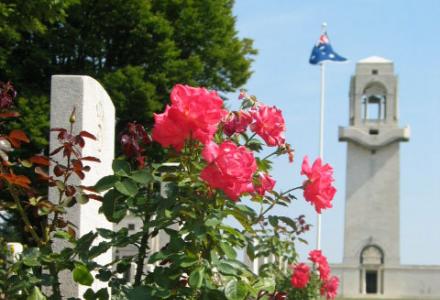At the outbreak of the Great War around 170 Aboriginal people lived on Cape Barren Island. Islanders earned a living from fishing, sealing, whaling, and snaring animals. From February to May each year, much of the community was absent mutton birding, working with the sea and the seasons as generations had before them. White authorities viewed the Palawa people with suspicion, labelled them lazy ‘haste-castes’, and bemoaned their ‘communistic tendencies’.
Twenty-seven islander men were deemed eligible to serve in 1914. Of these, twenty-one enlisted, a figure around four times the national average. Palawa men would fight at Gallipoli, in Flanders and on the Somme. Several were wounded, several died, all were honoured on a simple granite cairn that still serves as the island’s war memorial. ‘For King and Country’ reads an inscription above their names.
The records don't tell us why Private James Maynard went to war. Perhaps, as with many Indigenous servicemen, it was a quest to secure full citizenship; perhaps like many white diggers, the hope of travel and adventure; he may have listened to the island’s school master who ‘exhorted the Islanders to prove themselves equal to … white settlers by making great sacrifices’; more than likely it was just the chance of earning a regular wage. James Maynard was wounded twice in action—1917 (Passchendaele) and 1918 (the attack on the Hindenburg line). He was sent home to Australia a deeply damaged man.
Unlike his cousins William and Frank who never returned to Cape Barren Island. Frank was killed in 1916 and is buried at Pozières. William, the eldest Maynard boy, went missing during the Battle of Bullecourt and is missing still—his body was never recovered from the killing fields.
From the end of the war and right through the 1920s, Eva Maynard wrote to the military authorities time and time again. Hoping to learn something of William’s fate, longing for a photograph of her first born’s final resting place, craving something to remember him by.
An unsteady hand wrote many of these letters and often the sentences jolt with pain: ‘Two pocketbooks, a penny, a halfpenny, two disks with name on a cross, one little painted flower, five postcards… That is all I got of my poor old Will’
Eva Maynard’s correspondence has much in common with the letters thousands of other parents wrote. Grief laid low a generation, as young and old, rich and poor, Aboriginal and white Australians endured an unspeakable loss. But of course war wasn't the only way that Aboriginal people—islander people—lost their children. From the 1930s to the 1960s, this small, devastated community was devastated once again as white authorities relocated children—including the children of returned servicemen—to white families and white institutions on the mainland. The Cape Barren Island community was shattered by Assimilationist policies adopted in the aftermath of war. The Tasmanian government forced Aboriginal people off the island once set aside for them; welfare intruded on their lives, and missionaries demanded the ‘dispersal of the half-castes and their absorption into the general community’.
Islanders survived the Assimilationist policies that marred Australia in the 1950s—though many still bear the scars of the Stolen Generations. Today Palawa people proudly assert their distinctive identity, their resilience in the face of cultural genocide, testimony to the strength and courage of the Aboriginal community. Perhaps that courage is not so unlike the bravery of Islander men who went to war, fighting for a country that long denied them citizenship, and a British King who dispossessed them of their land.
James Maynard’s story reminds us of the inequalities and injustices faced by Aboriginal people and the failure by white authorities to acknowledge or reward their war service. Indigenous Australia has never forgotten the young men sent away from their families –those who died far from their country and those who returned.
For full attribution of sources, suggestions for further reading and an extended version of the story itself see ‘Whatever time they had left: Adam Wardrop’ in Bruce Scates, Rebecca Wheatley and Laura James, World War One: A History in 100 stories (Melbourne, Penguin/Viking, 2015) pp. 40-41; 355.



